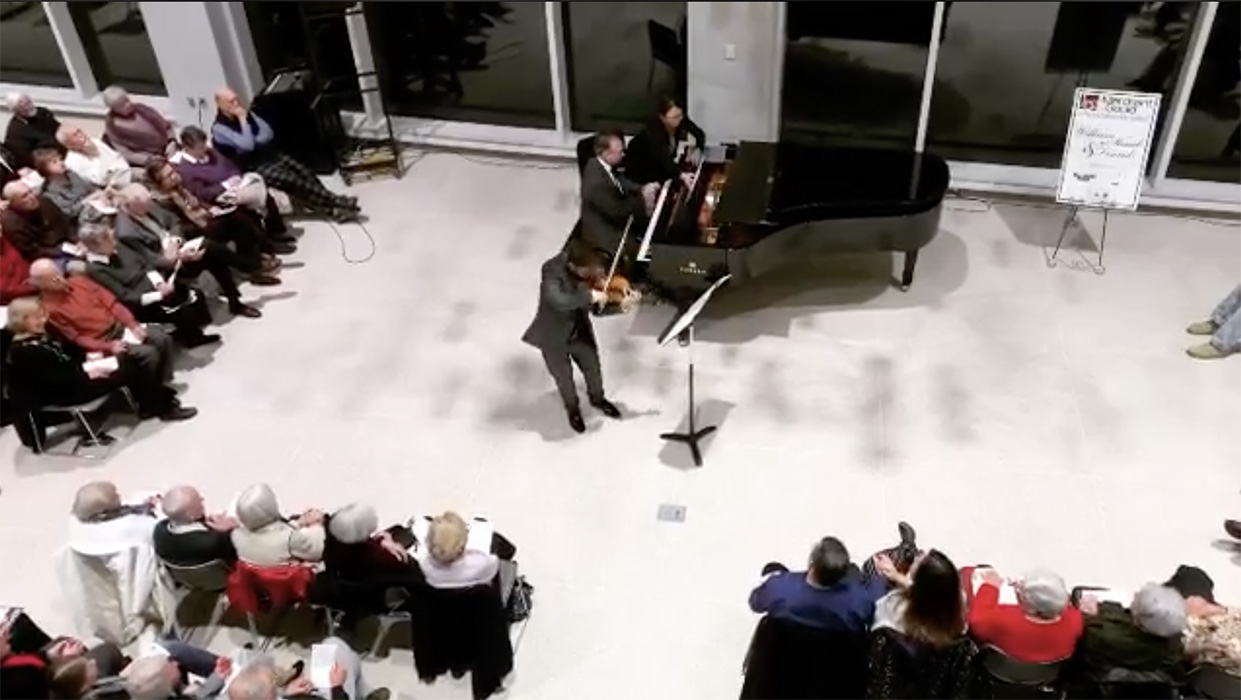Since its humble beginnings in the backroom of a coffee house, the Knoxville Symphony Orchestra’s Concertmaster Series has evolved organically, continuing to dazzle with small ensemble virtuosity, while also exploring the music’s connections to history and other art forms. Now housed in the Great Hall of the Knoxville Museum of Art and hosted by KSO concertmaster William Shaub, the popular concerts not only give listeners a close-up experience of music being made, but also reveal the stories behind the music.
With the focus on Beethoven during the 250th anniversary year of his birth, it was unthinkable that Concertmaster Shaub would miss the opportunity to cover some Beethoven territory. In this week’s installment of the Concertmaster Series, he offered a look at the composer’s own dramatic middle-period evolution over seven years through two works: the virtuosic Violin Sonata No. 7 in C minor, Op. 30, and the Piano Trio No. 1, Op. 70, nicknamed the “Ghost.” As a bonus, we have the advantage of the Beethoven250 focus to connect some historical dots in the music.
While music historians have generally ruled out the possibility that Countess Anna Maria von Erdődy was the unrevealed “immortal beloved” of Beethoven’s infamous undated love letter, she was, nonetheless, instrumental in promoting the composer’s career and prospects among the Austrian nobility. It is known that she actively advocated for a lifetime annuity from the nobility for Beethoven to remove the possibility that he be lured elsewhere for employment. Their relationship was sufficiently close that he took up residence in her large Krugerstrasse apartment in Vienna for a period of six months beginning in October 1808. It was in that apartment that Beethoven’s two Opus 70 Piano Trios received their first performances, no doubt attended by the wealthy nobility Beethoven sought to impress.
Shaub was joined in the trio by pianist Kevin Class and KSO principal cello, Andy Bryenton. The work’s nickname, the “Ghost”, comes from the nature of the second movement Largo assai ed espressivo, rendered on this occasion appropriately suspenseful and dark with each instrument contributing varying spooky textures. Shaub and Friends changed the mood completely with the finale Presto movement, bringing an unconscious sense of liberation from darkness through warmth and an up tempo spirit.
As an educational nod to Haydn, Beethoven’s one-time teacher, Shaub, Class, and Bryenton also performed a movement from Haydn’s Piano Trio No. 39 that is popularly known as the “Gypsy Rondo.” While the trio revealed a number of unexpected delights in this runaway gypsy wagon, I admit to yearning for an even faster tempo.
An intriguing side-trip following the opening Beethoven Sonata was Ford’s Farm for Violin and Piano by the contemporary Mason Bates. The 4-minute work, commissioned by violinist Hilary Hahn, was rich with brilliantly executed drive, percussiveness, and bluegrass textures —and was the perfect antidote/diversion for any listeners who may have overindulged in the Beethoven250 celebration.








